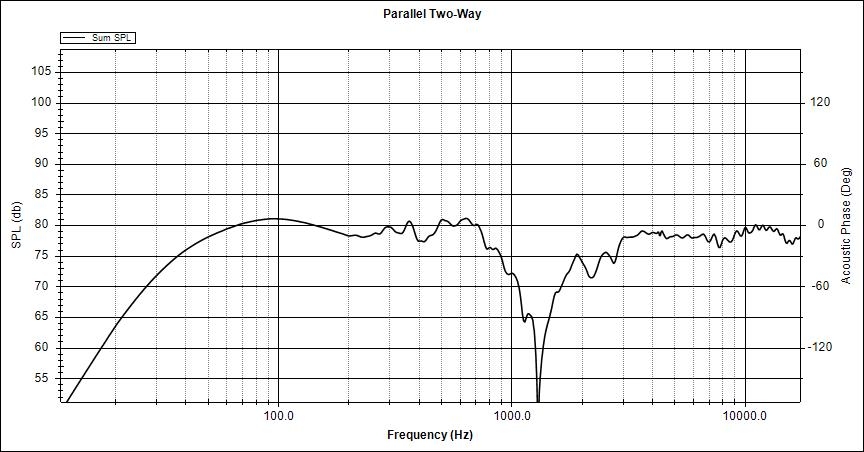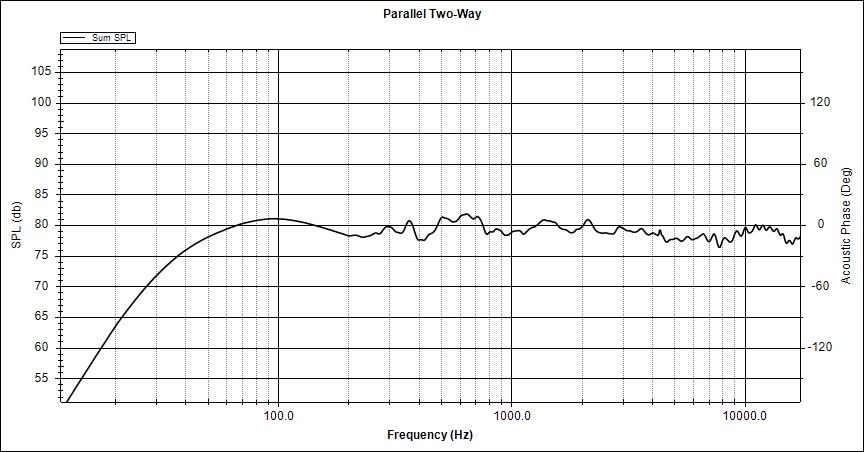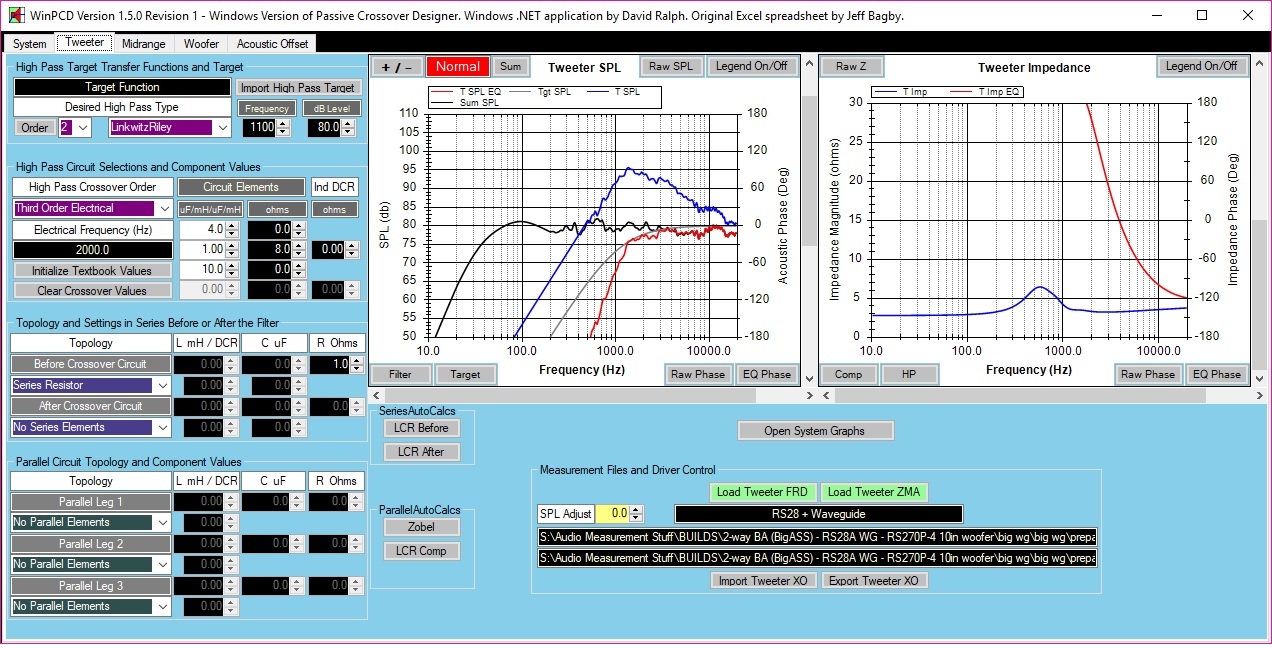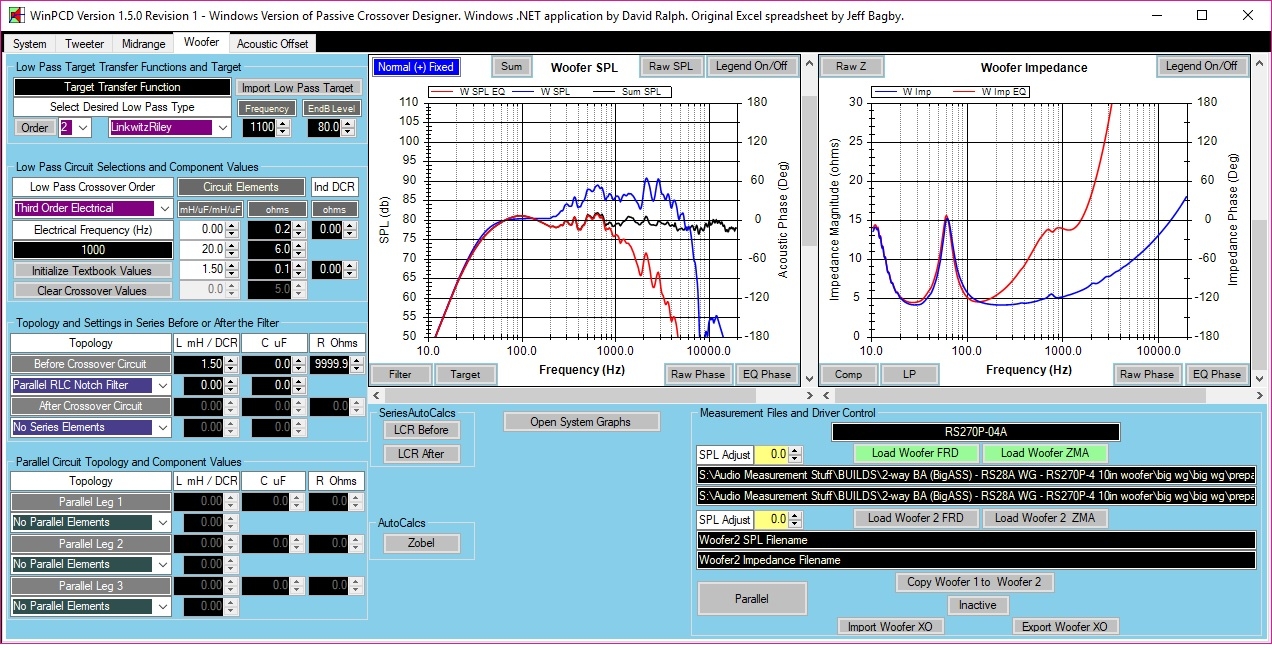Site Links
Howdy, Stranger!
It looks like you're new here. If you want to get involved, click one of these buttons!
Quick Links
Categories
In this Discussion
Who's Online (0)
WG 2-way design thread.
There seems to be some interest in this so I figured I would post it up. I've had some drivers and veneer on the back burner for a few years and decided to do something with them. I got them all measured and Craig got me squared away with the files and a base x-over to start from. I don't have exact values on hand for this but ordered a bunch to test this week. It's going to be close to see if I can get something I really like built in time. I'll bring them to indiy either way but it may not be a final product. They are completely finished and nice looking from that aspect.
The first option sounded pretty good there is a little off-ness in the lower mids i need to figure it. The below info is an option I want to try. I wanted to give the woofer a little less slope and take a touch off the tweeter db wise. The phase still looks really good. IT's going to be a balancing act with really sharp roll offs on both drivers so you dont hear an abrupt transition. I really really love the sound of the tweeter in this guide. Im listening to demos and hear alot of cool stuff. The woofer RS270P-4 is as little quirky, I may need to change to a 3" port from a 2" port or just seal it for the time being.
As always question, comment, critique as you see fit. I don't offend easily.
First picture is the raw measurements and measurements with the filter in place.

Summed response with rev null

Summed response

Tweeter circuit (not targeting 2 order just didn't change it)

Woofer circuit (not targeting 2 order just didn't change it)

The first option sounded pretty good there is a little off-ness in the lower mids i need to figure it. The below info is an option I want to try. I wanted to give the woofer a little less slope and take a touch off the tweeter db wise. The phase still looks really good. IT's going to be a balancing act with really sharp roll offs on both drivers so you dont hear an abrupt transition. I really really love the sound of the tweeter in this guide. Im listening to demos and hear alot of cool stuff. The woofer RS270P-4 is as little quirky, I may need to change to a 3" port from a 2" port or just seal it for the time being.
As always question, comment, critique as you see fit. I don't offend easily.
First picture is the raw measurements and measurements with the filter in place.

Summed response with rev null

Summed response

Tweeter circuit (not targeting 2 order just didn't change it)

Woofer circuit (not targeting 2 order just didn't change it)





Comments
So I see you mentioned the RS270P-4, but what is the tweeter. I'll hazard a guess: RS28A in the SEOS guide?
The drum tracks sound really good. I dont feel a ton of air coming out of the port or any chuffing yet or maybe i just used to aluminum cone drivers. This is by far the most challenging design i've had to work with. Its doubtful ill have a "final" version by this weekend. I will probably need to play with crossover points a little more.
Related-ish question on waveguides - often graphs for waveguides (like augerpro) show a downtrending response when apply to a tweet. Overheard Chuck at Indy talking about how silkie's tend to have blip or upward moment in the upper range, such that waveguide 'can' balance out. Happily experienced that myself with seas 27tdfc in visaton waveguide --- but to the core question, is the lower range boosted/reinforced or top end rolled off with waveguiding? I'm tending to believe the former given some measurements took for my SDC25 project. Did proto build using the woofer and tweet, but now seems need to pad it a little more while using a lower xover and having tweet in waveguide.
A bit of both, but it mostly boosts the lower end. Zaph provided a comprehensive answer way back when.
Yup, mainly boosts the low end, but should also be providing pattern control. Kinda the reason to use one for mating with larger mid-bass/woofers.
A little of both IMO. The directivity control acts like a lense focusing the lower frequency output, thus boosting it at the listening position. But, from what I gather researching online, interactions with the throat can cause cancelations in the upper register, and thus reduced output up there, unless extra attention is paid to the design. Often you will see the throat covering part or all of the surround, probably in an effort to shade some of the energy that causes the cancelation.
A really good WG should widen the pattern up high, which implies lower SPL on-axis, because it's spreading the same acoustical energy over a wider angle. The exact opposite of what happens at the bottom, really. I don't have a good example off the top of my head, but I'll bet that Purifi's tweeter-development paper & WG docs from Fluid or HifiCompass would show this.
If it's on Zaph's page, I should reread the whole thing instead of just finding the link!